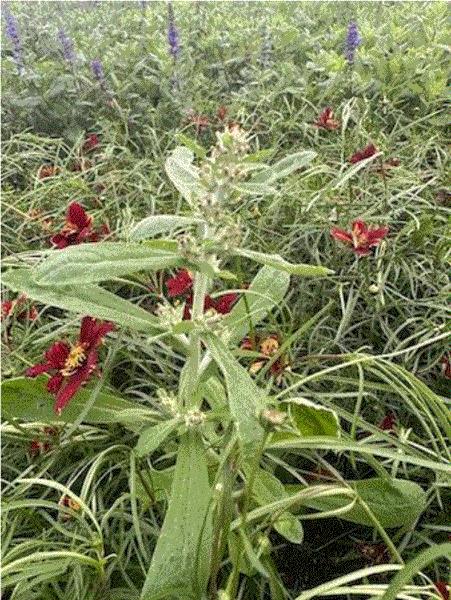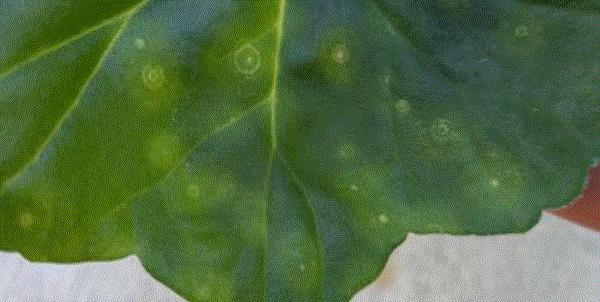Bug People Storm National Harbor This Week
After I mentioned the iguanas in southern Florida in the last issue, some of you were wondering if I travel for a living. Florida one week and Minnesota the next. Lo and behold—he’s in California! No, I don’t really travel for a living, but I do travel quite a bit. Several trips from coast to coast have been planned in winter and spring. Unlike many travelers, I don’t skip over the middle part of the country.
What can I say? I just love to be on the move and I have a day job that allows me to do that. (Thank you, SePRO!)
I’m attending the annual meeting of the Entomological Society of America at National Harbor or Oxon Hill, Maryland, this week. Three thousand four hundred scientists who have anything to do with insects and mites are gathering at the Gaylord Convention Center.

Don't stand in the way of entomologists looking for free coffee and cookies.
I’m stealing a few hours from the meeting to pen this week’s newsletter. It’s fun to meet my colleagues and listen to some exciting research (especially by students), but I must break away from the crowd and “science-ness” to give my mind something else to wonder about.
I’ll satisfy the clients (that is ya’ll, my loyal readers) of my side hustle (that is this newsletter) in the next issue when I discuss a few interesting things I heard at this meeting. Ambrosia beetles, scale insects and so much more. Stay tuned!

Guess That Weed With Paul Pilon
I don’t have a “Guess That Bug/Disease” game this week, sorry. But our own Paul Pilon introduced us to a new weed in his most recent issue of Perennial Pulse.
The weed has oblong silver leaves and produces lots of white, fluffy seeds. You can imagine the seeds being blown everywhere, including media that’ll be used in pots!

It’s not a new plant to me, actually. Sorry, I can’t tell you what it is because I want y’all to play Paul’s game! I've seen them (or at least what I think is the answer) growing quite commonly in the South, BUT rarely as a weed in containers, though. I wanted to say I “never” seen them in containers, but truthfully, I don’t think I pay weeds enough attention to say that for sure. I’m a good bug killer, but I’m still trying to be a better weed killer.
If you have a guess, tell Paul by going to his most recent Perennial Pulse.
Tower’s Crop Safety
Let’s stay on the topic of weeds. The focus in my day job covers more than just insecticides. I’ve learned over the past six months that weed management is very different from insect or disease management. Weed spectrum, application timing and application methods all make a significant difference in efficacy—and don’t forget the product combinations, both tank mixes and application sequences! How do growers and weed scientists put these combinations together? This old dog has much to learn obviously.
Are you using Tower (dimethenamid-p)? This may not be the most used preemergent herbicide by volume or application frequency, but it’s certainly a good tool for managing grassy and broadleaf weeds, particularly nutsedges and annual grasses.
IR-4 conducted 594 trials between 2007 and 2023 to assess the crop safety of Tower. It published an updated summary last week. Tower was tested as over-the-top application at one, two and four times the low label rate (21 fl. oz. per acre). The highest rate was included as the “worst case scenario” or to show what may happen when over-application occurs. Tower label limits the application rate to 32 fl. oz. per acre for a single application and 64 fl. oz. per acre per year.
One-hundred-fifty-four plant genera or species were tested. Seventy-four of them showed no injury, whereas 30 showed no injury at the low rate (0.97 lb. active ingredient per acre or 21 fl. oz. per acre), but injuries of varying degrees at higher rates. Fifteen species were injured even at the low rate. These sensitive plant genera or species are Aquilegia sp., Catharanthus roseus, Cladrastis sp., Crassula ovata, Crassula sp., Echeveria sp., Echinacea purpurea, Echinacea sp., Epilobium canum, Helianthus annuus, Muhlenbergia dubia, Rudbeckia fulgida, Rudbeckia hirta, Teucrium chamaedrys and Viburnum opulus. Some of these, such as the columbine and muhly grass, are already listed as sentive plants on the label. The other species may be listed in the future.
GO HERE for IR-4’s summary of Tower’s crop safety.

MA Introduces AmyloShield
Mycorrhizal Applications (MA) introduced AmyloShield, its newest biofungicide, last week. The first time I heard about AmyloShield was at Cultivate.
AmyloShield contains Bacillus amyloliquefaciens (strain PTA-4838). There are several products containing different strains of B. amyloliquefaciens (go to Growertalk’s Biosolutions Guide for a list), but this is the first time when strain PTA-4838 has been introduced for ornamental uses. The product can be used indoors and outdoors, and on vegetables, fruits, hemp, turf and other crops.

AmyloShield is applied as a foliar spray for the management of several diseases, including powdery mildew, Botrytis, downy mildew and many foliar diseases. This product is best used for preventive treatment—it prevents disease by protecting the plants with metabolites (cyclic lipopeptides) produced by the beneficial bacteria.
AmyloShield is OMRI-listed and has a shelf life of two years. The post-harvest interval (PHI) is zero days, meaning that growers can harvest their vegetable crops within the day of application. The restricted entry interval (REI) is 12 hours. Personal protective equipment (PPE) includes coveralls, waterproof gloves, shoes plus socks and protective eyewear.
Go HERE for the news release announcing the introduction of AmyloShield.

TSWV on Geranium
Brian Whipker and Patrick Veazie of North Carolina State University (NCSU) reported on an unusual detection of Tomato Spotted Wilt Virus (TSWV) on geranium on the most recent issue of e-GRO Alert.
We’ll get to the virus shortly. First, we’ll go to the second question y’all may have. Yes, you’re correct—we're talking about the same Brian Whipker, who's a famous horticulturist at NCSU with extensive experience working with PGRs and other aspects of floricultural production. Why is Brian talking about a virus? Well, because a horticulturist just has to know all aspects of horticulture. Horticulturists have my respect. As the case reported by Brian and Patrick demonstrated, horticulturists often have to play detective, too.
Three plants, each a different cultivar, in a greenhouse in North Carolina exhibited tell-tale symptoms of ring spot virus. Testing with Agdia’s ELISA test kit confirmed that the symptoms were caused by TSWV. Infection of geranium by TSWV isn't unheard of, but it’s exceedingly rare. Brian and Patrick summarized the relationship between TSWV and geranium through the ages and in various publications. They're nteresting reads.

A close-up of the ring spots on a TSWV-infected geranium. (Photo credit: Brian Whipker, NCSU.)
It’s not clear how the TSWV got onto the geraniums. The virus is typically transmitted by thrips. Transmission from stock plants is also possible, but perhaps unlikely since indexing for viruses is a must-do process in young plant production. All the affected plants, three total, were properly discarded. Brian and Patrick reported that Mike Munster of the NCSU Plant Disease & Insect Clinic stated that no other sample was confirmed positive in North Carolina.
Will these three plants go down in the history books as “patient zero” of an outbreak of TSWV on geraniums in North Carolina? I don’t know; one case certainly doesn’t make a pattern. Only time will tell where this story goes, but I sure hope they don’t receive that title.
Go HERE for a copy of the e-GRO Alert.




See y’all later!

JC Chong
Technical Development Manager at SePRO
Adjunct Professor at Clemson University
This e-mail received by 27,847 subscribers like you!
If you're interested in advertising on PestTalks contact Kim Brown ASAP!